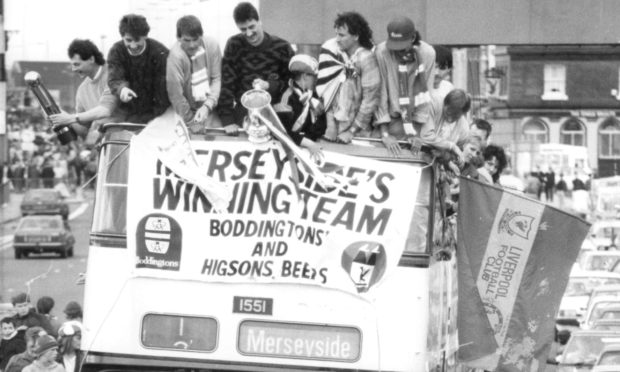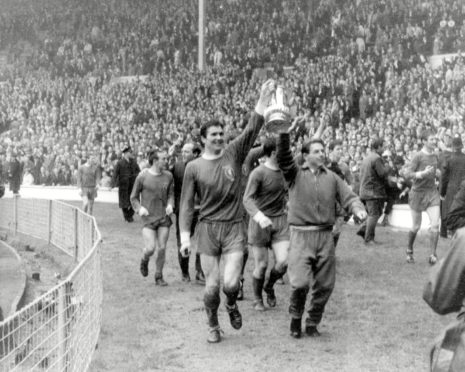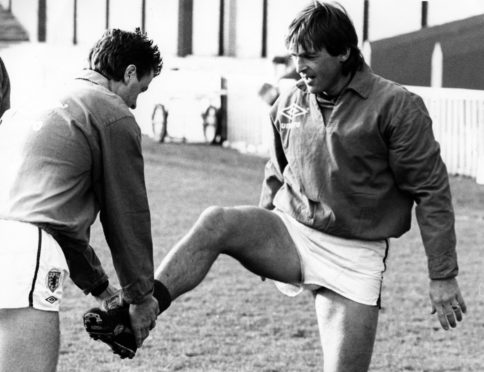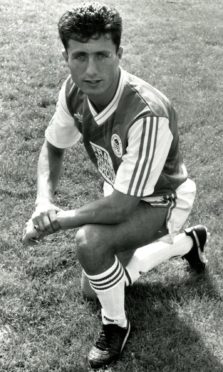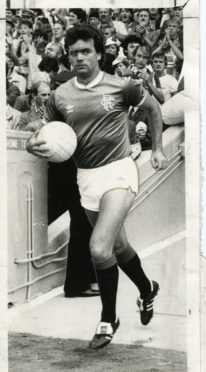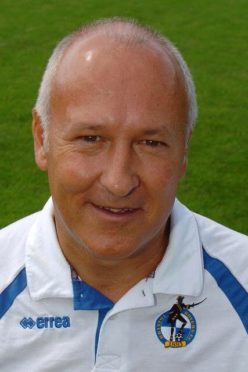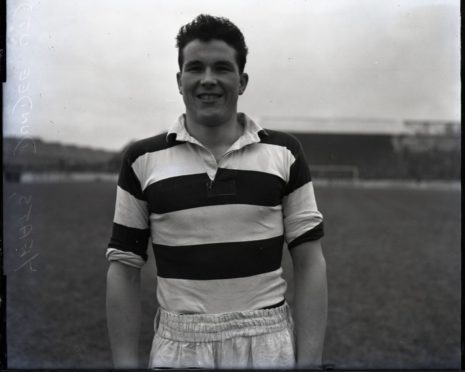He was the Aberdeen-born man mountain who enjoyed a stellar career at Anfield, both steering Liverpool to their first FA Cup triumph in 1965 and the league title the following year.
And even after Ron Yeats retired from the game he had graced on the pitch, whether at Dundee United or on Merseyside, he became Liverpool’s chief scout in 1986 and helped recruit some of the most famous names in their history during his 20-year tenure.
Paul Molesworth was one of the people he trusted to unearth new diamonds in his role as head of scouting for the Midlands: a big geographical area, covering Stoke, Derby, Nottingham, Leicester, Coventry, Birmingham and myriad other places.
So, as you might expect, he grew accustomed to clocking up the miles as he journeyed across England on his quest to track down players who might improve the Liverpool squad.
Yet, perhaps unsurprisingly, given Yeats’ interest in football in his homeland, Molesworth found himself being despatched on some less than magical mystery tours to Scotland.
Kenny Dalglish
And he has spoken about these experiences, which reveal how the then Anfield manager, Kenny Dalglish, was keen on attracting the likes of Scotland legends John Collins and the late Davie Cooper to Anfield in the second half of the 1980s.
He said: “Every Thursday afternoon or Friday morning, by 11am at the latest, Ron would call to confirm which game I was required to attend on a Saturday – this was before matches were being scheduled all over the weekend, on Friday nights and Sundays.
“Anyway, there was one occasion where I didn’t hear from Ron, so I phoned his direct line at Melwood and, sure enough, he answered in his very deep Scottish accent: ‘Sorry son, I’ve nae forgotten ye, but we’ve got a wee problem and the boss (Dalglish) needs your help’.
“It turned out that Kenny was desperate to get an urgent report on two players he was really keen to sign and the designated scout couldn’t get there to watch them.
“I asked him what he wanted me to do and he replied: ‘Well son, the boss really trusts you, so we need you to go and watch John Collins and Gordon Hunter playing for Hibernian against Falkirk tomorrow’.
“Okay Ron, I’ll go, but I’m head of coaching for the Midlands, mate.”
“He responded: ‘Aye son, you’re right and that’s why you’re going to the middle of Scotland’.
“I couldn’t really argue with that, so next day, it was a 600-mile round trip from Birmingham to Edinburgh for me. I got to Easter Road at around 2pm, with just one stand ticket, no lounge pass, and they didn’t have a team sheet, so I asked for a programme.
“This just listed a squad on the back, and the public address system was very poor, so I couldn’t make out the names when the teams were announced to the crowd.
“I was sat near to the press box and asked one of the reporters for a quick look at the team list – and that’s when I saw the Hibs line-up and there was no sign of Collins or Hunter.
“So I asked the journalist where they were and he told me: ‘Just about to sit down next to you, pal. They’re injured, they’ve both missed the last couple of games and aren’t quite ready for this one, but they should be okay for next week’.
“That was brilliant news, all that long journey for frigging nothing. I said ‘Hi’ to the lads, but I obviously couldn’t do any more than that. And it was terrible game, 0-0.
“One silver lining, though, was a bright performance by Mickey Weir, who was lively and sent some great balls into the box, all to no avail. So I decided we should keep tabs on him.
“But then, there was the trek back to exotic Birmingham and I arrived home after midnight. On Monday morning, I was straight on the phone to big Ron at Melwood and he asked: ‘How did Collins and Hunter look?’
“I told him: ‘Fine. They looked good, Ron, excellent dress sense in the cold conditions’.
“’What the f*** are you on about, son?’
“’They weren’t playing Ron, they were both injured and have been out for a few weeks’.”
“He was quiet for a minute. Then he said: ‘Och, you’re joking me’. And that was that. But at least I filed a report about Mickey Weir and he signed a few weeks later – for Luton Town!”
Davie Cooper
Molesworth realises the problems faced by clubs in these circumstances. He is still plying his trade at Exeter City after working as chief scout at Bristol Rivers and being involved with Newport when they drew with Spurs in the FA Cup in 2018 – a result which prompted Juventus to contact him for tips on how to tackle Tottenham in the Champions League.
But there was at least one more mission and another gruelling marathon for this redoubtable character as Yeats did his best to bolster Dalglish’s squad.
It concerned Liverpool’s attempts to attract Cooper, the famously mercurial Rangers talent, who was still just 30, but was not considered a pivotal part of Graeme Souness’ plans as he orchestrated his dramatic overhaul of the Ibrox organisation.
Hence another phone conversation between Molesworth and Yeats, as the prelude to a second trip from Birmingham to Scotland. The scout was given very clear instructions on this occasion: “This one is very important son, it’s Davie Cooper, he has been out injured, but he is definitely playing tomorrow in the Rangers versus Kilmarnock bounce (reserve) game.
“We know he’s a great player, but we just want to check on his fitness and his attitude in a game he should boss. I’ll fax the ticket request to Rangers now, it’s a 2pm kick-off.”
So far so good.
But Molesworth gradually became embroiled in another fiasco.
He added: “Off I went, bright and early. I got the 6.30am train to Glasgow and arrived in the city just after 11am. So I had plenty of time, had some food, then headed off to Ibrox.
“I arrived about 20 minutes before kick-off and remember thinking there weren’t many vehicles in the car park, but well, it was only a reserve match, wasn’t it.
“But after getting into the building, a bubbly receptionist asked me if I was there for the stadium tour. I told her no: ‘I was there to see your reserves against Kilmarnock’.
“Well, she looked at me and then said: ‘Um, sorry, that game is at Rugby Park. Have you come far, you sound English?’
“I answered: ‘Yeah, just the 300 miles so far. I work for Liverpool FC, but I live in Birmingham’.
“While we were talking, the club secretary appeared and asked if I was Paul Molesworth.
“Yip.”
“He said: ‘We sent a fax back to Ron Yeats yesterday, informing him that the game was actually away at Killie’, and then he showed me the message.
“I phoned Ron and told him what had happened. I could hear him rummaging through his pile of papers and, sure enough, he eventually found the fax.
“But then, he laughed and remarked: ‘Ach, these Scottish trips don’t seem to go too well, son….could you maybe get there for the second half!’
Stadium tour
Molesworth eventually received a stadium tour, a cup of tea, and the Rangers secretary arranged for details to be sent up from Kilmarnock.
You can perhaps guess the rest. As Molesworth recalled: “Along with a superb Rangers pennant, they put the team details in a club carrier bag and off I went back to Glasgow city centre to get the train back to Birmingham.
“Once I was on board, I got the team sheet out and had a look. Did Davie Cooper play?
“Did he bollocks! It’s just a good job I didn’t bother getting there for the second half.”
These were rare hiccups in the pair’s relationship. Molesworth thought the world of the talismanic Yeats, who is now battling dementia in a care home in Merseyside. And, by all accounts, the feeling was reciprocated by one of Aberdeen’s greatest-ever footballers.
But there was another train story which is worth recounting, from the time when the young Yeats was starring for Dundee United.
He received a call from the club, telling him he was playing for the Tannadice side on New Year’s Day and swiftly rushed to Aberdeen railway station and caught the service south.
While en route, he struck up a conversation with another passenger who was enjoying a bottle of whisky and offered Yeats a festive dram.
The player responded by saying he would have to turn down the chance of a drink because he was playing for United in the afternoon.
His temporary companion poured himself another short and looked him in the eye.
Then he said: “It’s a small world, pal – I’m refereeing it.”
